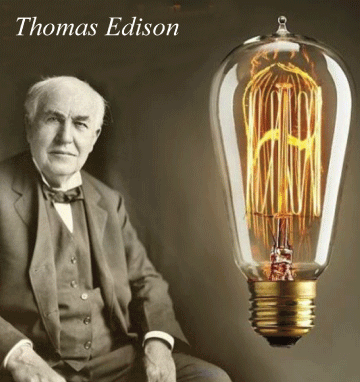An english physicist named joseph wilson swan created a “light bulb” in 1850 by encasing paper saturated with carbon in an evacuated glass sphere. Humphrey davy created a powerful electric lamp and demonstrated it to the royal society.

Who Really Invented The Light Bulb? - Bbc Science Focus Magazine
Us inventor thomas edison is often credited with creating the solution in 1879:
When was the light bulb invented. Who invented the light bulb? Thomas edison was an american inventor, and is famous today for many different inventions, of which the light bulb is just one. Many other inventors had also devised incandescent lamps, including alessandro volta 's demonstration of a glowing wire in 1800 and inventions by henry woodward and mathew evans.
The first battery was created by alessandro volta. He also created the world’s first industrial research laboratory. Learn the story of inventor thomas edison, and his workshop's journey to the invention of the incandescent lightbulb in 1879.
And by 1860 he had a working prototype, but the lack of a good vacuum and an adequate supply of electricity resulted in a bulb whose lifetime was much too short to be considered an effective prodcer of light. The first practical incandescent bulbis developed by edition in 1878as he applied first for the patent of a light bulb in 1878. The light bulb invented by cruto, lasted five hundred hours as opposed to the forty of edison's original version.
Later, he and his researchers found that the ideal filament substance was carbonized bamboo, which produced over 1,200 hours of continuous light. In 1841, british inventor frederick demoleyns patented a light bulb and in 1844 american john wellington starr filed a u. Thomas edison and joseph swan fought for the patent of the first light bulb in 1879.
In 1882 munich electrical exhibition in baveria, germany cruto's lamp was more efficient than the edison's one and produced a better, white light. Yet the british chemist warren de la rue had solved the scientific challenges nearly 40 years earlier. One man from england sends electricity through a piece of platinum and it starts to make light.
The first lightbulb patent was issued to englishman frederick de moleyns in 1841. Thomas edison's development of the light bulb. In 1850 an english physicist named joseph wilson swan created a “light bulb” by enclosing carbonized paper filaments in an evacuated glass bulb.
The first approach in the development of light bulb was made by humphry davy in 1802. The first fluorescent light bulb was invented by heinrich geissler in 1858. The led was invented in the 1960s by nick holonyak.
What was the purpose of the light bulb? In 1840, british scientist warren de la rue developed an efficient light bulb using a coiled platinum filament but the high cost of platinum kept the bulb from becoming a commercial success. Patent caveat for an incandescent lamp.
The light bulb helped to establish social order after sundown, extended the workday well into the night, and allowed us to navigate and travel safely in the dark. For instance, he also invented the phonograph, which was the first device that could. In his 84 years, thomas edison acquired a record number of 1,093 patents (singly or jointly) and was the driving force behind such innovations as the phonograph, the incandescent light bulb and one of the earliest motion picture cameras.
Thomas edison is credited with inventing a whole host of valuable inventions but the real. A significant invention of the late period of the industrial revolution was the light bulb, which was invented by thomas edison in 1879. Thomas edison is the widest known creator of the light that lit up the world but there were attempts before him that very nearly perfected the invention.
The first experiments with electric light were carried out in the early 19th century. Bulbs tested following that lasted for. On october 21st, 1879, in one of the most famous scientific tests in history, thomas edison debuted his signature invention:
The carbon filament light bulb. When he connected the terminals of the battery to a carbon electrode (used as a filament), it started to glow. He demonstrated his light bulb in december 1879.
Many others would follow suit but none of the bulbs were effective for everyday use. People do the first experiments with electric light at the beginning of the 19th century. In fact, the technology has been evolving since the invention of the first light bulb in the 18th century to reach the current form of the led light bulbs.
Edison was able to produce over 13 continuous hours of light with the cotton thread filament, and filed his first light bulb patent on january 27, 1880. This glow didn’t last longer because filament burnt very quickly. That’s when humphry davy from england discovered that when an electric current passed through a platinum wire, it became hot and lit.
Unfortunately a lack of a good vacuum and an inability to supply an adequate amount of electrical current resulted in a. In 1835, the first constant electric light was demonstrated, and for the next 40 years, scientists around the world worked on the incandescent lamp, tinkering with the filament (the part of the bulb that produces light when heated by an electrical current) and the bulb’s atmosphere (whether air is vacuumed out of the bulb or it is filled with an inert gas to prevent the filament. In 1806, 70 years before thomas edison introduced his invention to the world;
The led smart light bulb that you use today was not present in the past.

